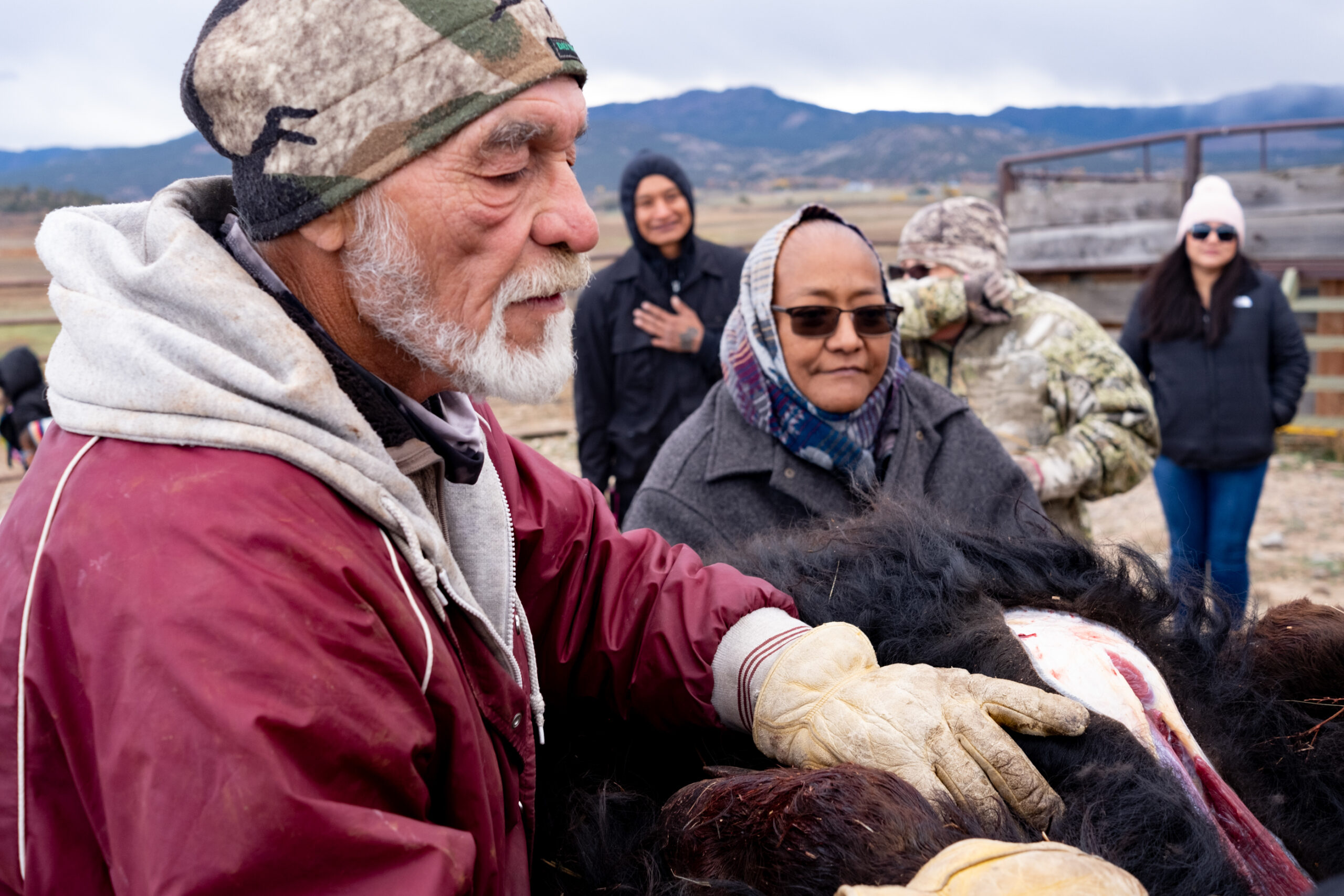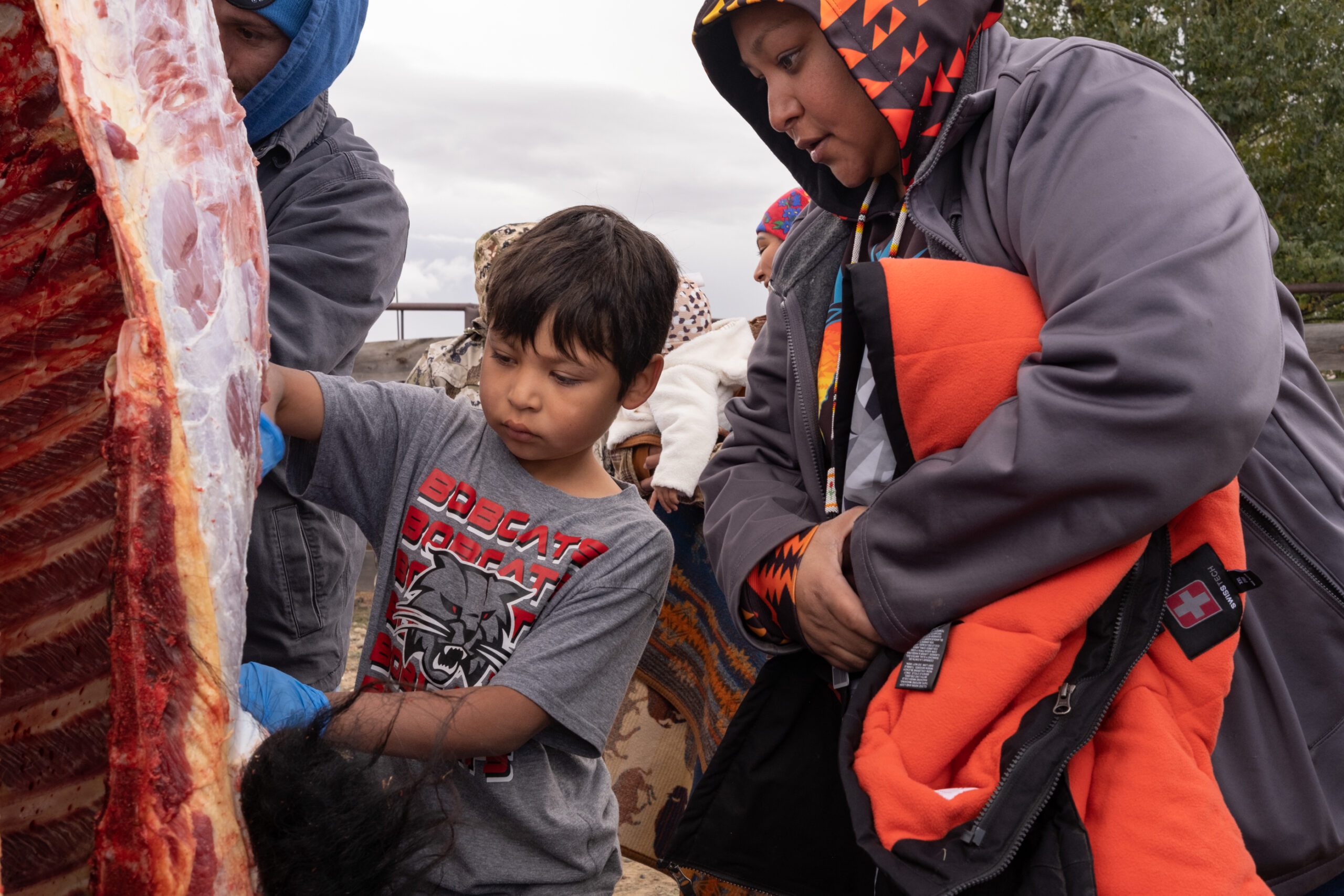Tribe holds annual bison round up ahead of winter








Montessori students join in cultural harvest
The Southern Ute Wildlife Division held their annual bison roundup, Wednesday, Oct. 26. Southern Ute Tribal Rangers, DNR and other departments worked together to carefully pull each animal from the herd for yearly vaccinations and tagging; each bison received an eight-way vaccination and their annual deworming medicine.
The main purpose of the annual roundup is to perform an overall health check of the bison herd to maintain herd health. “Just like humans dread going to the dentist,” Wildlife Bison Herd Manager Jesse Lasater said. “I presume the bison dread this day, but we work really hard to keep the event as low stress and calm as possible. Their total time in the chute is minimal and they are put back into their pasture immediately after their health check is complete.”
“It’s a very long, hard and busy day, but having the opportunity to be so close to such beautiful creatures and feeling their power and size is such a special and truly remarkable experience – and it’s one that always leaves me feeling humble and grateful,” Lasater emphasized. “I’m very proud of the work that goes in to care for the Tribe’s bison herd and the improvements that have been made to the herd and pasture over the past several years.”
In conjunction with the roundup, a cultural field dressing workshop was also hosted by the Tribe’s Wildlife Division, Thursday, Oct. 27. This year’s event saw students from the Southern Ute Indian Montessori Acadamy, joined by teachers and parents, interested in learning the process of cleaning and skinning the harvested bull bison. Students had the opportunity for hands on participation in the field dressing process, following a Sunrise Blessing by tribal elder, Byron Frost and Bear Dance Chief, Matthew Box.
Acknowledging their Ute traditions, SUIMA students were able to keep a lock of bison fur once the animal was dressed. Others warmed themselves by the campfire, enjoying hot cocoa and the excitement of the morning. For many of the young participants, the bison harvest provided an opportunity which they might not have otherwise participated in. Cultural etiquette was addressed by Southern Ute elder, Ernest “Muz” Pinnecoose, following the early morning harvest outside the bison pasture.
The bison chosen for harvest was a two-year-old bull, he was one of two animals culled from the herd that day, bringing the total bison herd count to 109. Maintaining the heard size is an important component to maintaining the health of the herd, while also addressing the membership’s need for bison meat. “Outside of the annual field dressing ceremony, I haul the bison every month during the winter months to be harvested at a USDA facility in Montrose,” Lasater explained.
A big part of the bison program is the meat distribution program to the tribal membership and the Southern Ute Indian Montessori Acadamy’s lunch program. Roughly 35-40 tribal members come to the Wildlife Division every month for bison meat. The program offers five pounds of bison meat to Southern Ute Indian tribal member households at no cost, each month. “In total, about 2,300 pounds of bison meat is distributed each year to the tribal membership from the SUIT bison herd,” Lasater said. “The meat is all natural grass-fed, making it a very healthy food source.”
The cycle of life continues, and the continued management of the Tribe’s herd is an example to follow; 21 new calves were born into the herd this past year. The Southern Ute Indian Tribe is also a long-standing member of the InterTribal Buffalo Council, whose mission is, “Restoring buffalo to the Indian Country, to preserve our historical, cultural, traditional and spiritual relationship for future generations.” The InterTribal Buffalo Council includes fifty-eight tribes from nineteen states and a collective herd of over 15,000 buffalo.
“The roundup is one of a few days out of the year where I have assistance from the DNR Wildlife staff and other departments, and I enjoy the company,” Lasater remarked. “It’s nice to have someone to talk to besides the buffalo.”








